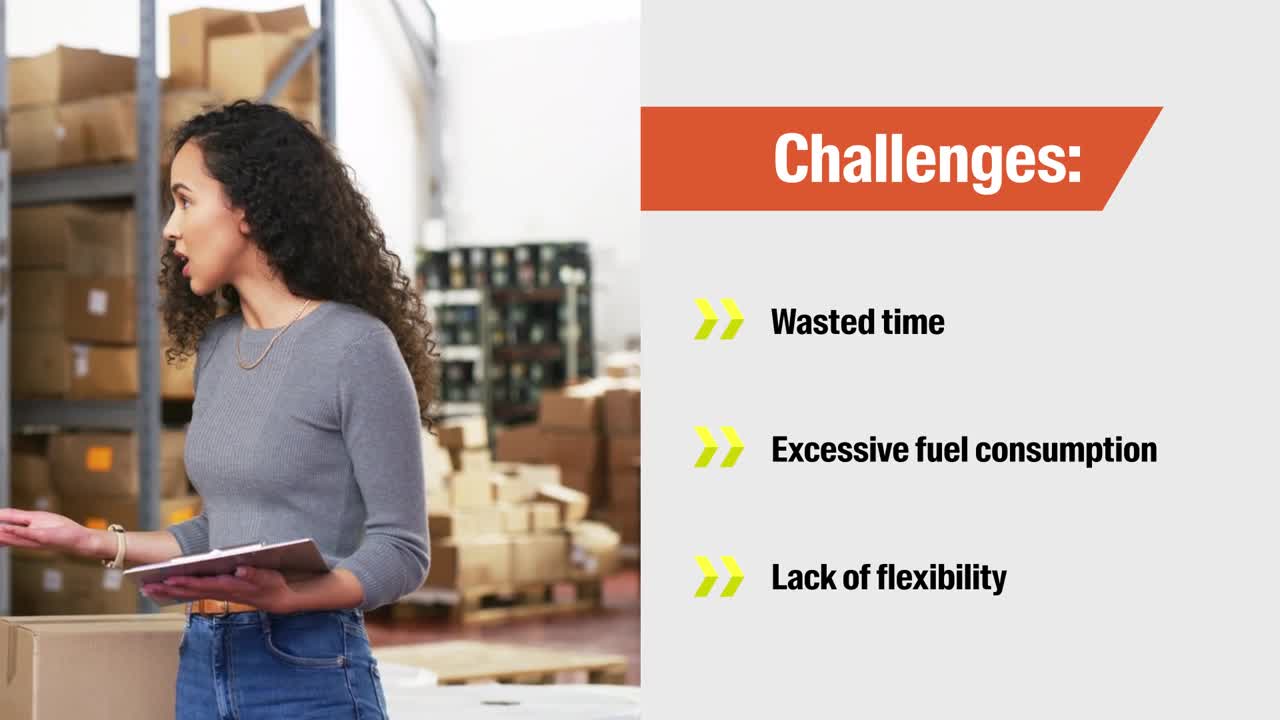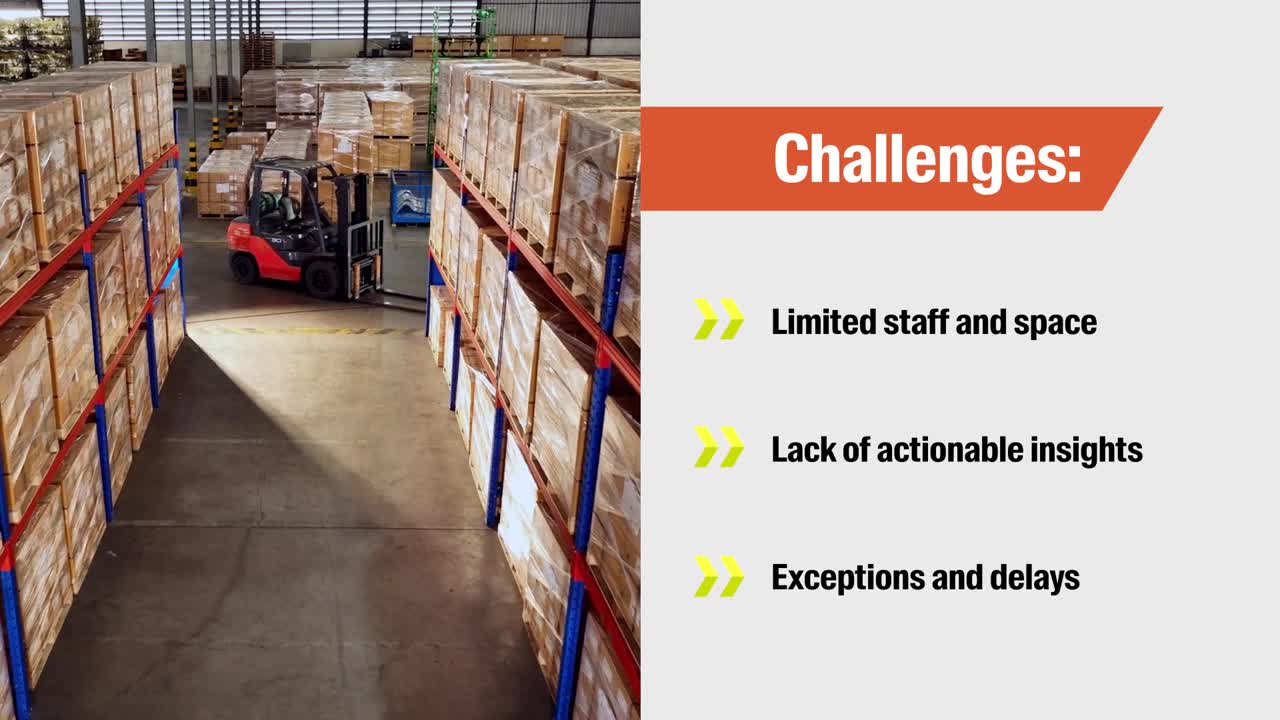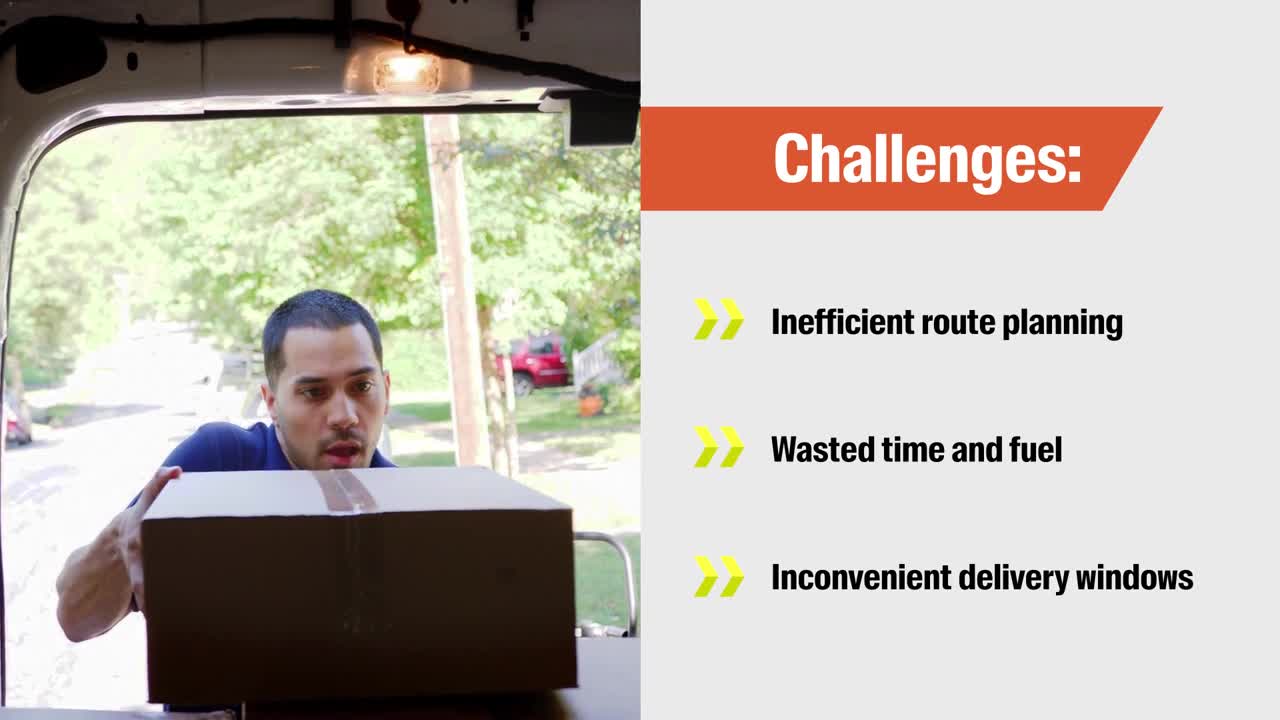Featured in this post
How Transportation Management Software Shores Up 5 Logistics Pain Points
How Transportation Management Software Shores Up 5 Logistics Pain Points
Jan 25, 2024
 Aptean Staff Writer
Aptean Staff Writer 
A transportation management system (TMS) can play a pivotal role in optimizing logistics and transportation operations for any manufacturer, distributor, third-party logistics provider (3PL) or retailer—delivering transformative benefits that can significantly impact your organization.
When you boil everything down, the true advantage of a TMS lies in its ability to harmonize demand with available capacity. Industry research has shown that companies with advanced routing and scheduling functionality—one of the primary capabilities of TMS software—save up to 30% in their delivery transportation costs. Apply these numbers to your business model, and it’s easy to see the return on investment (ROI) implementing transportation management software tools can deliver.
As with any substantial financial commitment, it's imperative to construct a compelling case for TMS adoption and secure buy-in from key stakeholders within your company. To do this, you’ll need to evaluate how a TMS can effectively address your critical logistics pain points, ultimately leading to improvements across various operational areas. From optimizing route planning and carrier management to enhancing visibility and cost control, the right TMS software equips your organization with the tools needed to drive measurable growth throughout your entire company.
Now, let's dive into the specifics of how TMS tools can empower your team and help your business overcome barriers to success. We'll explore five key challenges, highlighting the pertinent features TMS software offers and the corresponding benefits you can attain.
Pain Point No. 1: Route Planning and Optimization
If you've ever been frustrated by the time-consuming manual route planning process, you're not alone. It drains your team's valuable time, which could be better spent elsewhere. That's where route optimization software comes in. By automating route creation, you can reduce planning time from hours to minutes. With those efficiency gains, your planning team can focus on more strategic tasks, and you can potentially offer later order cut-off times to your customers since route planning no longer needs to be done so far in advance.
Traditional routing methods often lead to inefficient schedules, manual workarounds, wasted fuel and increased costs. But a routing and scheduling tool, with advanced algorithms, calculates the most efficient routes for your vehicles, leading to significant fuel savings, reduced vehicle wear-and-tear and potentially more drops per route.
Of course, there are still late orders and last-minute changes that can disrupt your plans. Traditional methods or basic routing software struggle to quickly adapt, limiting your flexibility and scalability, and potentially affecting your revenue. However, the right route planning and optimization tool provides the agility you need.
With hybrid modeling, the solution takes into account every route as well as late, emergency or off-day orders. This helps ensure that you can promptly accommodate late or urgent requests, maintaining flexibility and even creating new revenue opportunities with your ability to fulfill these unexpected orders.

Pain Point No. 2: Delivery Execution
Imagine having the ability to implement dispatch smoothing, where your scheduling process factors in vehicle capacity, warehouse resources and manufacturing capabilities. The result? Greater dispatch efficiency and the reduction of delivery bottlenecks, ensuring smoother operations that help to get your deliveries to their destinations promptly.
Operating with multi-trip routes can be challenging, especially when exceptions or delays occur. Late-running drivers can leave trailers waiting, causing disruptions and added costs. However, with a delivery execution tool, you can be proactive. This powerful functionality provides real-time visibility of route progress so that your managers can react quickly to any deviations or issues, helping to ensure successful deliveries and enhanced customer satisfaction, even amid unexpected challenges.
Plus, you can feed all that real-world execution data, such as driver availability and hours worked, back into the planning process to further enhance performance. This leads to more efficient resource utilization and improved overall results, making it a “win-win-win" for achieving better outcomes and optimizing your operations.
Additionally, if you've struggled with a lack of insight into how adjustments to your operations could affect outcomes, strategic route planning capabilities can drive further optimization. You can use “what-if” modeling capabilities to test out scenarios—such as how a new depot location may affect efficiency—enabling smarter decision-making to bolster future planning and execution.

Pain Point No. 3: Customer Service
As customers across industries become more and more demanding, meeting precise delivery requirements, like specific time windows, truck and/or bay stipulations, can become an insurmountable task without the right routing and scheduling solution. Advanced systems can accommodate your business rules and customer preferences in the planning process, meaning your finished routes are aligned with customer expectations—enhancing satisfaction and improving first-time success rate.
Even with the best-laid plans, ensuring excellence in customer service once your drivers are out on the road can be challenging. Thankfully, TMS software with electronic proof of delivery software (ePOD) functionality is ideal for improving final-mile satisfaction. By removing the need for delivery paperwork customer-facing processes can be carried out efficiently and easily.
The software also helps you enforce consistent processes across all of your mobile workers, ensuring reliable service levels. And by providing real-time visibility to help you proactively solve customer service issues before they arise and automating customer delivery notifications, transportation management tools can really drive improvement in last-mile customer service.
And for goods requiring specific transport conditions, the right TMS software should offer functionality to help manage temperature-controlled zones and segregated compartments. This capability helps to ensure that products arrive in the desired condition, meeting client requirements and preserving product quality. With this feature, you gain confidence that deliveries will consistently meet clients' expectations.

Pain Point No. 4: Home Delivery and Service Fulfillment
For businesses delivering goods or services directly to consumers, home delivery software is another critical part of a comprehensive TMS setup. This sophisticated solution continuously optimizes routes as orders come in, even in high-volume omnichannel environments.
That means that your business can automatically offer tailored delivery time windows at point of sale that are both convenient for the customer and aligned with the needs of your operations. For example, by incentivizing the customer to choose a specific delivery slot because it’s more efficient for your operation—thus shaping the incoming demand to suit your business objectives.
Additionally, a TMS with tailored home delivery functionality helps by providing complete customer histories, including every interaction in the lifecycle, all easily accessible within the system. That empowers your customer service team to provide the best possible service, quickly resolving inquiries and issues.
Furthermore, a home delivery solution can give your entire organization visibility into orders, from the time they’re submitted through the moment that they’re delivered. There are no information silos when you have the right TMS system in place, and the home delivery aspects of such software unify order data and make it transparent for all to see.

Pain Point No. 5: Delivery Performance
When you're dealing with fragmented systems for tracking customer delivery details, it can lead to inefficiencies and missed opportunities. However, with the right TMS, you gain digital proof of delivery data captured in the field by drivers, all while following essential business rules with app-side guidance. This streamlined approach ensures efficient and effective delivery documentation processes, providing a cohesive solution to your tracking needs.
Not only that, but if you've been facing issues where customers lack insight into the delivery process, ePOD functionality automates customer communications with real-time updates. This not only results in better customer satisfaction but also enhances transparency throughout the delivery process, leading to a higher first-time delivery success rate. With this tool, you're better equipped to keep your customers informed and satisfied while optimizing your delivery operations.
Lastly, it’s important to point out that the best ePOD solutions are fully configurable according to your business’s processes. Depending on the kind of delivery, product or customer, you can tailor the instructions for your driver to ensure that expectations are met, and then apply those same parameters to similar situations across your wider operations.

Making the Case for Aptean as Your Provider
Now that you've discovered how transportation management software tools can address critical logistics and transportation challenges while delivering operational and financial advantages, it's time to build a compelling case for implementing our advanced TMS solution suite in your business. As we conclude, we'd like to present why Aptean should be on your list of potential providers.
First, consider our extensive experience. With a deep understanding of the unique challenges your industry presents and a wealth of best practices to overcome them, we bring decades of collective expertise to the table. We've collaborated with organizations like yours worldwide, spanning various industry segments, so we’re ready to help you drive your digital transformation.
Don’t just take our word for it. Take a peek at what some of our clients have to say.
Wren Kitchens, a leading provider of high-quality kitchens, reduced miles by 15% and improved customer delivery lead times by 60%.
BSW Timber, a timber manufacturer and supplier, used Aptean Routing & Scheduling to improve its route planning time and gained measurable efficiencies.
A leading pharmaceutical company optimized its home delivery operations with Aptean’s ePOD solution.
Next, consider the fact that as a comprehensive solution provider, our approach is to help you build the right tech stack to meet your organization’s current and future requirements, including those beyond TMS. Whether your business needs an enterprise resource planning (ERP) system, overall equipment effectiveness (OEE) software, enterprise asset management (EAM) tools or another solution, we’ve got you covered.
Ready to mitigate your major logistics pain points? Learn more about Aptean TMS today.
Unlock the Value of Your Logistics Operation With Aptean TMS Solutions
Book a demo at a time that suits you and discover how you can run a leaner logistics operation—with fewer surprises and more control.



